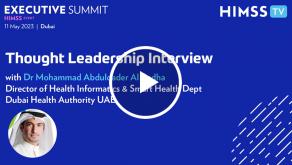Navigating the emerging hybrid science ecosystem

Photo: Sean Anthony Eddy/Getty Images
Generations of electronic medical records (EMRs) and digital health tools are rapidly producing troves of patient data, which could provide the keys to medical breakthroughs. Now, healthcare and life science leaders must choose a path towards secure collaboration to enable continuous, integrated research across converging healthcare and life sciences ecosystems.
Besides their participation in research, providers, payers and pharma executives must also consider monetization of their data, and what role, if any, their organization will play in those outcomes, especially when it comes to artificial intelligence (AI).
“For the immediate future, the reality is that AI isn’t going to replace researchers, it’s that researchers that use AI will replace those who don’t,” explained Alex Long, Dell Technologies’ Global Account Manager – Life Sciences. “So, the question everyone needs to ask is: How can we get AI the best possible data to learn from?”
‘Rewiring the value chain’ across medical and clinical research
For decades now, electronic record systems have been collecting and storing data desired by researchers and product developers.
“The consolidation of data for scientific discovery is rewiring the value chain of how we conduct medical and clinical research for the benefit of scientific discovery, drug development and therapeutics,” said David Dimond, Chief Innovation Officer for Dell Technologies. “We’ve got this pot of gold, but we don’t yet know what to do with it.”
These large sets of patient health information, once de-identified, can drive product innovation. More varied datasets can also help machine-learning models and artificial intelligence algorithms yield more accurate results.
“Healthcare providers are sitting on what is considered some of the most valuable data in the world right now,” Long said. In particular, archived EMR images retained in perpetuity for compliance may now assist clinical researchers and serve as a revenue source for health systems sharing them – a once-unpopular idea that both Dimond and Long believe deserves reconsideration.
Public and private organizations lead the way
In early 2023, the National Institutes of Health (NIH) issued a new data management and sharing policy to promote the secure sharing of scientific data among NIH-funded organizations such as academic medical centers. Part of that policy mandates an approved plan for managing and sharing data for use in research.
In the private sector, EMR vendors are also delving deeper into the health research space. Epic has Cosmos, a repository of some 193 million patient records that is among the largest integrated databases of clinical information in the United States. Another example is the Cerner Learning Health Network, where health systems can contribute de-identified data to ongoing clinical research and trials.
Any participation in research should include strong data management and security controls to avoid costly patient data compromises, while also driving forward the human progress of delivering care. That is, once an organization decides its role in future research programs.
“It’s not ‘Are you in, or aren’t you?’” Dimond said. “It’s ‘What is the best path for us to securely collaborate and share data that benefits everyone now operating within this emerging hybrid ecosystem?’”






























